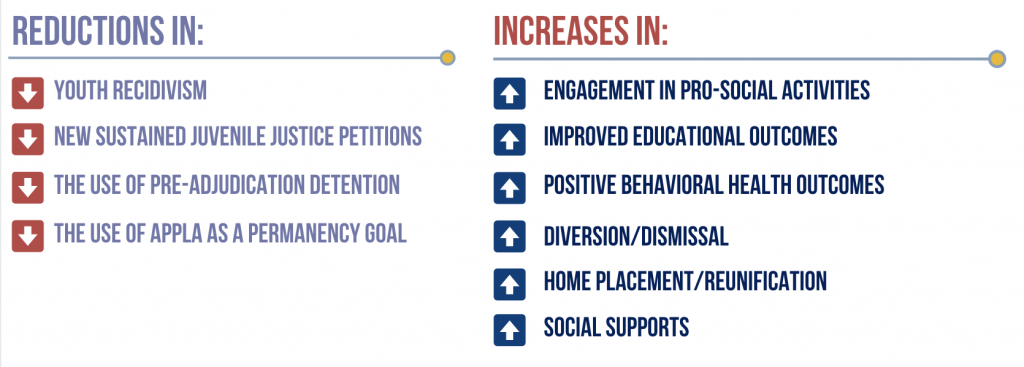CYPM Outcomes
Since launching the CYPM in 2010, the Model has grown substantially in communities across the country. In 2017, we celebrated reaching our 100th jurisdiction, and those numbers continue to grow each year. CJJR works closely with jurisdictions to collect, analyze, and provide data that demonstrates the Model’s impact. Those results are provided directly to the jurisdiction and are not for public distribution.
However, CJJR has developed an aggregate data report and CYPM-in-Brief Series to highlight the work of jurisdictions participating in the Model. Additionally, several independent institutions, including the University of Minnesota and the University of Nebraska, Omaha, have conducted evaluations on the CYPM. Each of these studies supports the validity of the CYPM as a promising and effective model for system change. Some of the outcomes these evaluations have linked the CYPM to include:
- An overall reduction in recidivism, a reduction in the severity of new crimes, and an increase in the time before recidivism;
- An increase in cases being dismissed or diverted and a reduction in sustained juvenile petitions;
- An improvement in crossover youth living at home and a reduction in detention and congregate care;
- An improvement in pro-social behavior.
Proven Results
In 2018, the California Evidence-Based Clearinghouse for Child Welfare (CEBC) rated the CYPM as having “Promising Research Evidence” with “High” relevance to child welfare; the ranking with CEBC has been maintained to date. In 2020, the United States Department of Justice (DOJ) Office of Justice Programs, National Institute of Justice also identified the Model as a “Promising program” in juvenile justice and added it to its CrimeSolutions.gov website. Additionally, Department of Justice’s Office of Juvenile Justice and Delinquency Prevention also designated the CYPM as a “Promising” program in its Model Programs Guide.
Research conducted in jurisdictions that have implemented the CYPM exhibited the following outcomes:

